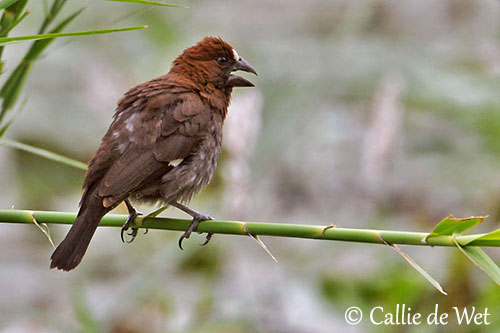
TO BE CONTINUED... FOURTH PART
Text by Nicole Bouglouan
Photographers:
John Anderson
John Anderson Photo Galleries
Callie de Wet
GALLERY
Steve Garvie
RAINBIRDER Photo galleries
Ken Havard
My Bird Gallery & Flickr gallery 1 & Flickr gallery 2
Dubi Shapiro
Dubi Shapiro Photo Galleries
Alan & Ann Tate
AA Bird Photography
Sources:
HANDBOOK OF THE BIRDS OF THE WORLD Vol 15 by Josep del Hoyo-Andrew Elliot-David Christie - Lynx Edicions – ISBN: 9788496553682
ROBERTS BIRDS OF SOUTH AFRICA by G. R. Mc Lachlan and R. Liversidge – The Trustees of the John Voelcker Bird Book Fund – ISBN: 0620031182
The Birds of Africa: Volume VII – C. Hilary Fry, Stuart Keith – Editeur: Bloomsbury Publishing, 2020 – ISBN: 1472986563, 9781472986566 – 724 pages
The Birds of Africa: Volume VIII: The Malagasy Region: Madagascar, Seychelles, Comoros, Mascarenes - Par Roger Safford, Frank Hawkins – ISBN: 1408190494, 9781408190494- Editeur: A&C Black, 2013
CREAGUS@Monterey Bay (Don Roberson)
SORA - WEAVERBIRD NEST AGGREGATION AND EVOLUTION OF THE COMPOUND NEST
Repeatability of nest morphology in African weaver birds
11 Interesting Facts about Sociable Weavers
Weaver Watch - Monitoring the Weavers of the World
Fatbirder - The World’s Richest Information Resource about Birds for Birders
Wikipedia, the free encyclopaedia
FAMILY PLOCEIDAE
Third part (courtship behaviour - nests- continued)
Weavers, sparrow-weavers, bishops, widowbirds, fodies, malimbes, queleas …
The subfamily Ploceinae includes numerous species of genera Amblyospiza, Quelea, Euplectes, Foudia, Brachycope, Ploceus, Malimbus and Anaplectes.
The Thick-bilked Weaver or Grosbeak Weaver of genus Amblyospiza is polygynous and may have up to 6 females, although in low density areas, it seems to be monogamous. It forms small colonies, occasionally more than 100 nests in South Africa.

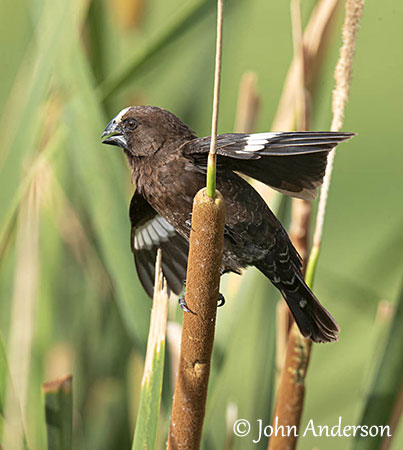
The male builds the nest, an ovoid structure with large side entrance, made of grass, palms or bulrushes. The building starts with a bridge between vertical supports, and then, a cup is formed below this bridge with a roof. When the nest is occupied, the entrance is reduced to a small round opening. The female lines the cup with wad of grass. The nest is attached 1-3 metres above ground or water to the marsh vegetation.
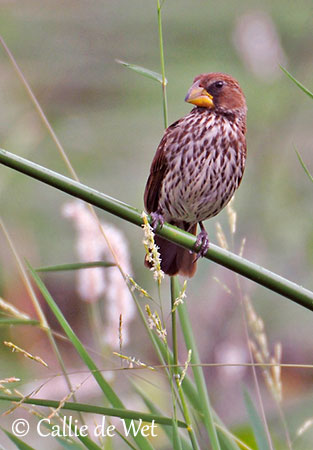
The Red-billed Quelea of genus Quelea breeds in huge colonies including up to 6000 nests in a single large tree, sometimes much more. The breeding period is synchronized within the colony and all birds leave the area within 40 days of first nesting.
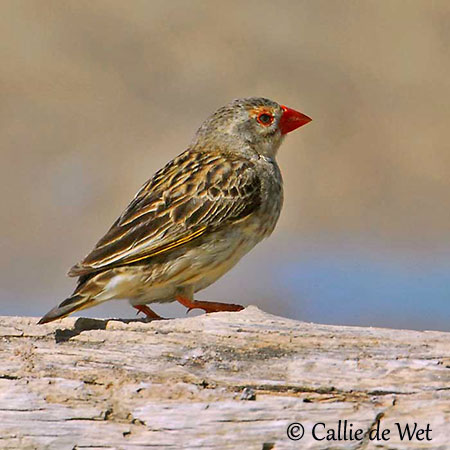
Red-billed Quelea
Quelea quelea
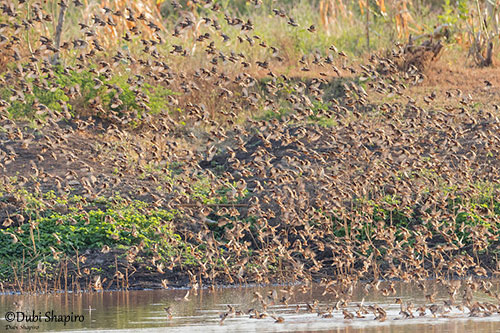
Red-billed Quelea
Quelea quelea
The male builds the nest and works during 2-3 days. It is a roughly woven small, oval ball of grass with a side “entrance under a small porch. It is placed 1-6 metres (often 2 metres) above the ground in thorny tree, reeds or sugar cane.
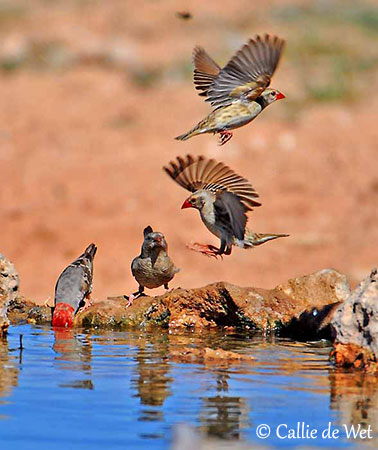
Red-billed Quelea
Quelea quelea
The Yellow-crowned Bishop of genus Euplectes is polygynous and breeds in small colonies. It is territorial and defends its territory by making fluffed-flights at rivals and females.
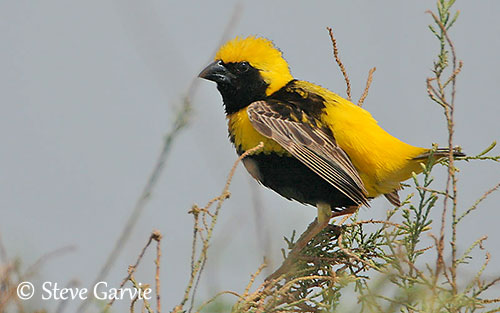
Yellow-crowned Bishop
Euplectes afer
During the courtship displays, the male performs its bumble-flights when a female approaches. Then, it displays from a perch if the female lands. The bright yellow feathers of both head and upperparts are fluffed, until the male resembles a giant bumble-bee.
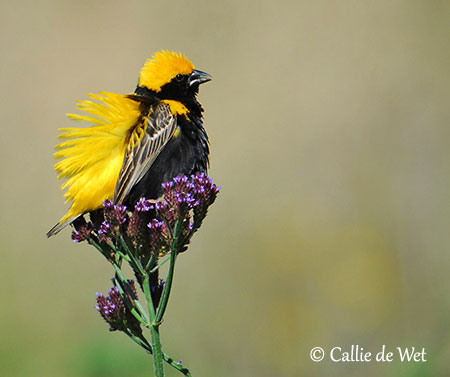
Yellow-crowned Bishop
Euplectes afer
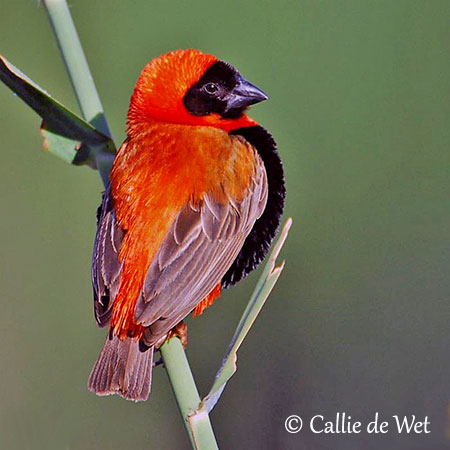
Euplectes orix
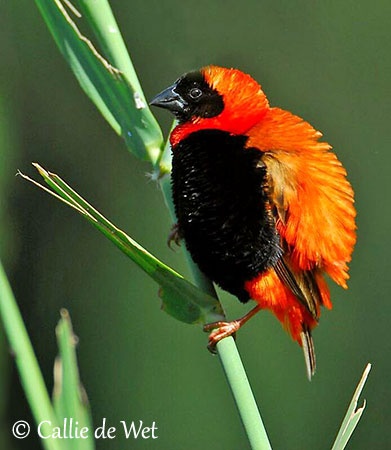
Euplectes orix
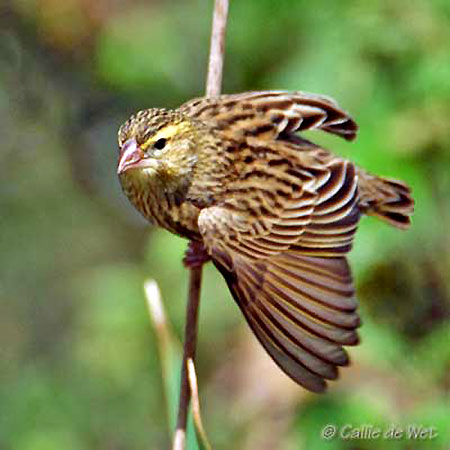
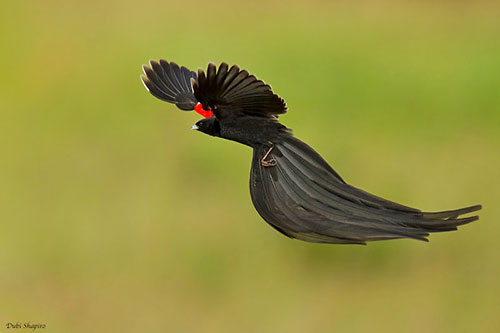
Long-tailed Widowbird
Euplectes progne
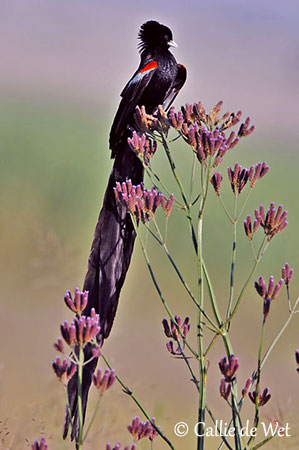
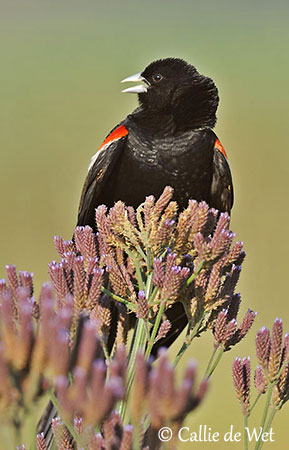
Long-tailed Widowbird
Euplectes progne
In this species, the female builds the nest usually alone, a domed structure with side entrance woven from fine grass. There is also living material and the lining includes flowering grass-heads forming a porch over the entrance. The nest is built less than 50 centimetres above the ground in short tuft of grass.
The Fan-tailed Widowbird is polygynous and may have up to 8 nests within the territory. It patrols with a slow, undulating flight, prior to perched displays or in territorial defence against intruders. The long rectrices play a role in attracting females, while the red epaulets are important during interactions between males.
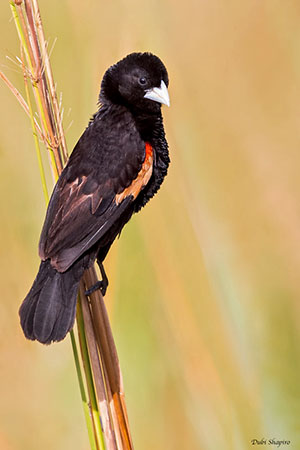
Fan-tailed Widowbird
Euplectes axillaris
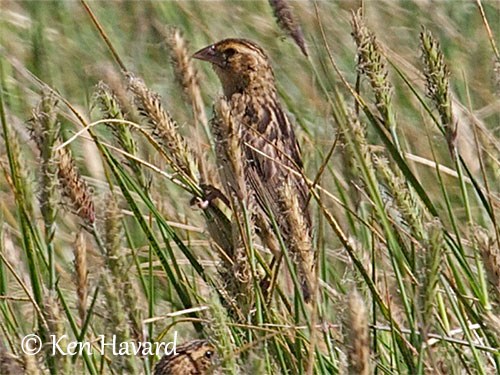
Fan-tailed Widowbird
Euplectes axillaris
Female
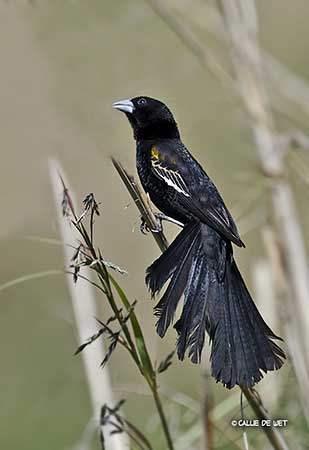
Euplectes albonotatus
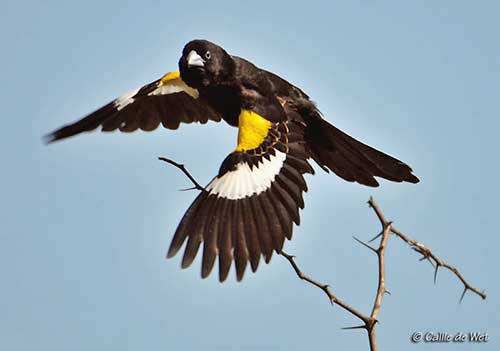
Euplectes albonotatus
The nest is fairly similar to those of the other widowbirds. The male uses it to display, always while singing. It hangs from the entrance with quivering wings. When the female is ready for copulation, she raises her wings, the tail is quivering and she gives piping calls.
The species of genus Foudia are present on Indian Ocean Islands. This genus probably originated in Africa and spreads to the Seychelles. Most of them occur in forest and woodland, their original habitats, but the Red Fody from Madagascar usually frequents more open habitats.
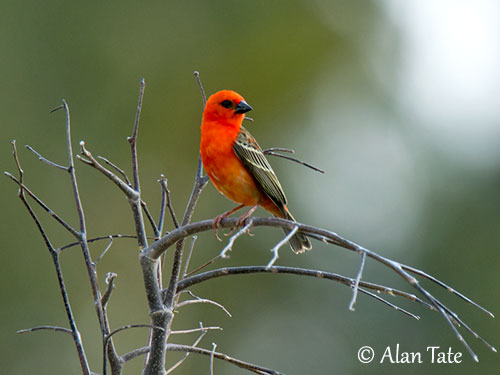
Foudia madagascariensis
All species build similar nests, a globular structure with a side entrance near the top, and usually with a small porch above the entrance. Some Foudia species may add a roof on the nest to protect it from the rain.
This type of nests is very similar to the nest of the typical weavers, but it is probably more primitive.
The Bob-tailed Weaver of genus Brachycope is the unique member of this genus. It is suspected to be monogamous and solitary nester. The nest is a spherical structure also with lateral entrance, made with grass and strips between 2 and 5 metres above the ground in small tree or bush.